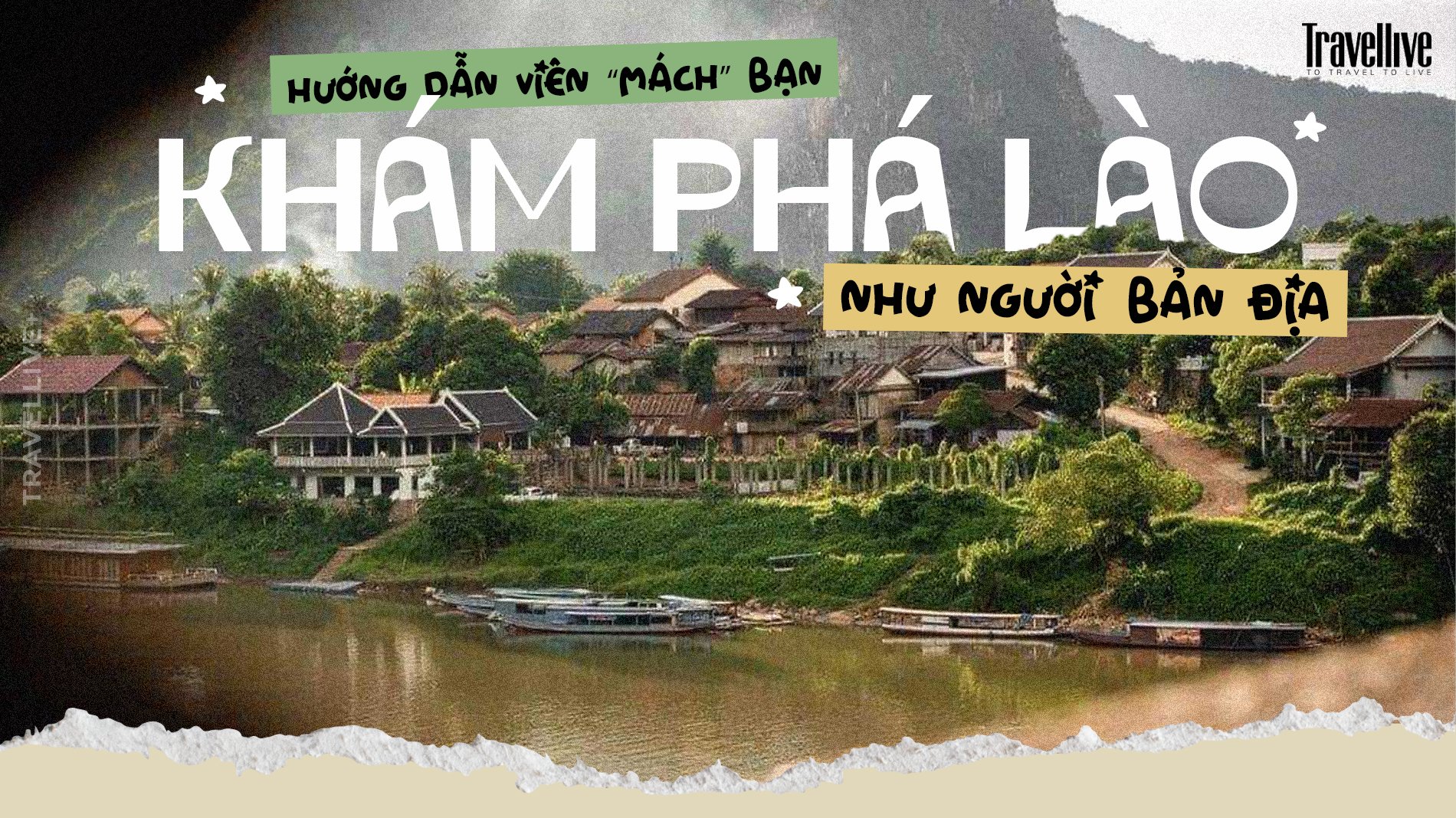There are lands where there is no need to rush, just let yourself wander along the red dusty roads, listen to the sound of water lapping at the shore or smile in response to a gentle look.
Amidst the hustle and bustle of modern life, there is a land where time seems to stand still, where people live slowly, peacefully and exchange genuine smiles, like the Mekong River flowing slowly through the centuries. That is Laos - the Land of a Million Elephants, a destination for souls who love simplicity, simplicity but also full of charm. Dam Quoc Khanh, a Vietnamese tour guide living here, will lead you on a journey to discover the beauty of Laos in the most special way - through his own authentic experiences.

Dam Quoc Khanh’s journey to Laos was not a pre-planned trip. It was simply a trip while waiting to receive his diploma, but this land naturally kept him there. “Compared to other places, I find Laos very familiar. It gives me the feeling of reliving the old days, when everything was slow and simple,” Khanh recalls.
It was that peace that made him decide to stay and become a tour guide to introduce Laos to those who share his passion for discovery.
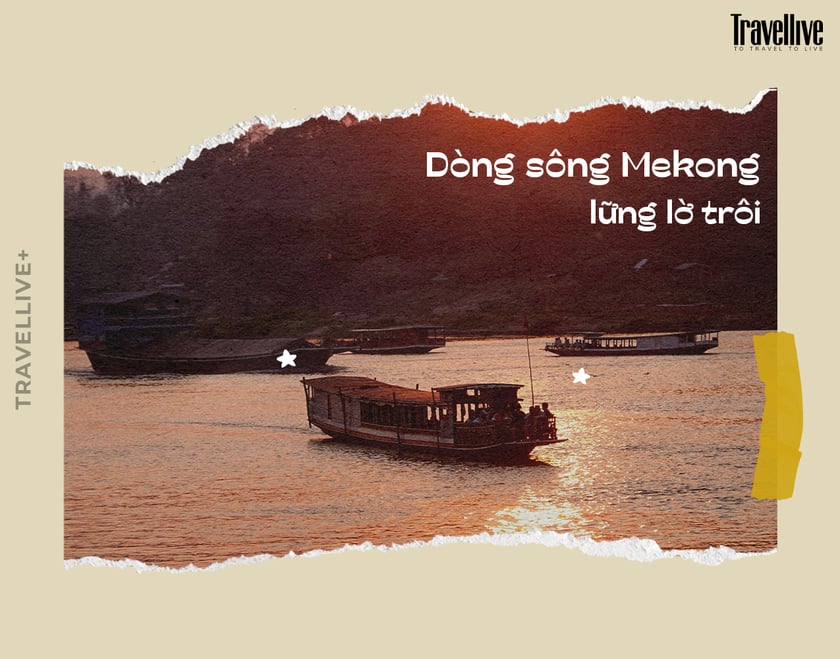

When mentioning Laos, people often think of Luang Prabang or Vientiane, but according to Khanh, the beauty of this country does not stop at familiar destinations. “Vang Vieng, Nong Khiaw or Champasak are places that are really worth exploring,” Khanh said.
Vang Vieng is a picturesque landscape, with clear rivers, green rice fields and majestic limestone mountains. This is a place for adventurous souls, with activities such as kayaking on the Nam Song River, exploring mysterious caves or simply cycling through peaceful villages where children run barefoot on the red dirt roads.

Nong Khiaw is a dream for those who love wild nature. This small village on the Nam Ou River is surrounded by limestone mountains, where you can climb high peaks to see clouds hovering below, or row a boat down the deep blue water, winding through the villages of ethnic minorities. When the sun sets, just sit quietly by the river, sip a sip of bitter coffee and let time pass slowly.
Champasak, the land of heritage, has a different color. This is where Wat Phou is located – a sacred ancient temple recognized by UNESCO, once the cultural center of the ancient Khmer kingdom. Mossy stone steps lead up to the ancient temple, where visitors can gaze out over the vast rice fields, like a picture of the past and present intertwined.
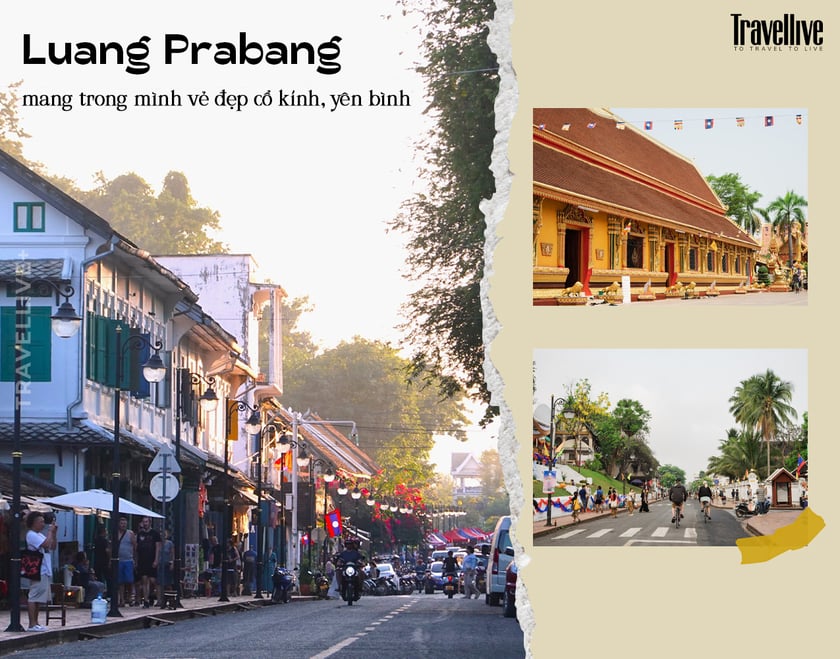
If you like relaxation, Luang Prabang is the perfect destination. This ancient capital has the beauty of ancient temples, small, tree-lined streets and a peaceful pace of life. In the morning, visitors can stroll on the cobblestone streets, watching monks in yellow robes silently begging for alms, and then in the evening, lose themselves in the shimmering lantern lights on the banks of the Mekong River.
“Luang Prabang has many temples and craft villages, so tourists have many options to experience the culture. And I am sure that anyone who has been to Luang Prabang once will definitely want to come back,” Khanh affirmed.

Traveling to Laos in April will bring visitors to one of the most vibrant and bustling festivals - Bun Pi May, also known as Water Festival. This is the occasion for Lao people to welcome the new year according to the Buddhist calendar, lasting for three days (usually from April 13-15), with rituals imbued with spiritual culture.
In the morning, people perform the ritual of bathing the Buddha with scented water, scattering flowers and offering prayers for peace. Afterwards, a festive atmosphere fills the streets, as people happily splash water on each other as a way to wash away bad luck and wish each other a peaceful new year. These days, the whole country is like a giant street festival, where visitors can join the crowd, letting the cool water jets take away all their worries.

Laos is not only attractive because of its scenery but also because of the slow pace of life, the sincere and simple lifestyle of its people. Lao people always smile and say “Sa Bai Dee” when they meet each other, sometimes just a gentle look or a bow is enough to warm people’s hearts. Here, no one is in a hurry. People sit and sip coffee on the banks of the Mekong River, watching the water flow slowly, or leisurely on small, tree-lined roads. In Laos, you not only travel, but also learn to listen to the rhythm of time, to live slower, more gently.


Lao cuisine is an adventure for those who love to explore, not only because of the flavors but also because of the stories behind each dish. Khanh especially recommends that visitors should visit the Vientiane and Luang Prabang night markets, which not only have colorful stalls but also are a place where the quintessence of local cuisine converges.

Lao cuisine is influenced by Thailand, Cambodia and Vietnam, but still retains its own unique features. Lao people love to eat grilled food, especially Ping Kai grilled chicken, marinated with lemongrass, garlic, pepper, then grilled over hot coals, giving off an attractive aroma. A dish not to be missed is Larb - a minced meat salad mixed with herbs and lime juice, symbolizing luck and often appearing at traditional parties.
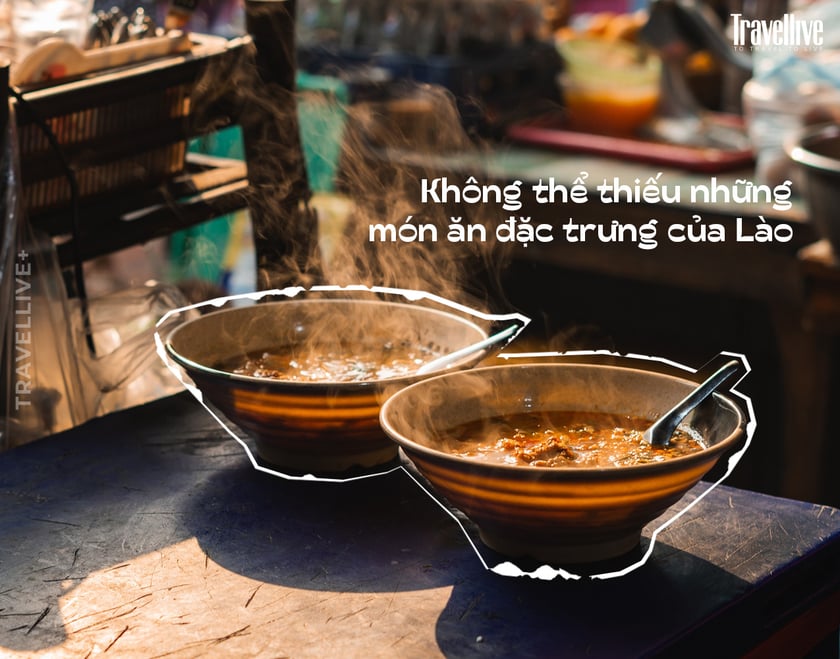
But there are also dishes that are a real “challenge” to the taste buds of Vietnamese tourists. “Tam Mak Hung – Laotian papaya salad – can confuse many people from the first bite. It is spicy and uses Thai-style sauce, so many Vietnamese tourists will find it a bit difficult to eat. For tourists, this dish is often varied with shrimp, crab or squid,” Khanh said.

Independent travel in Laos is not too difficult if you have a clear plan. Khanh advises tourists to exchange money in advance, prepare a 4G sim or eSIM for convenient communication. Traffic in Laos is mainly tuk-tuk, taxis are not as popular as in Vietnam, so it is necessary to calculate the appropriate means of transportation.
One special thing is that Laos does not have many “tourist traps” like some other destinations. “Here, people live very sincerely and simply. They do not solicit or overcharge. That is also one of the reasons I love this land,” Khanh confided.

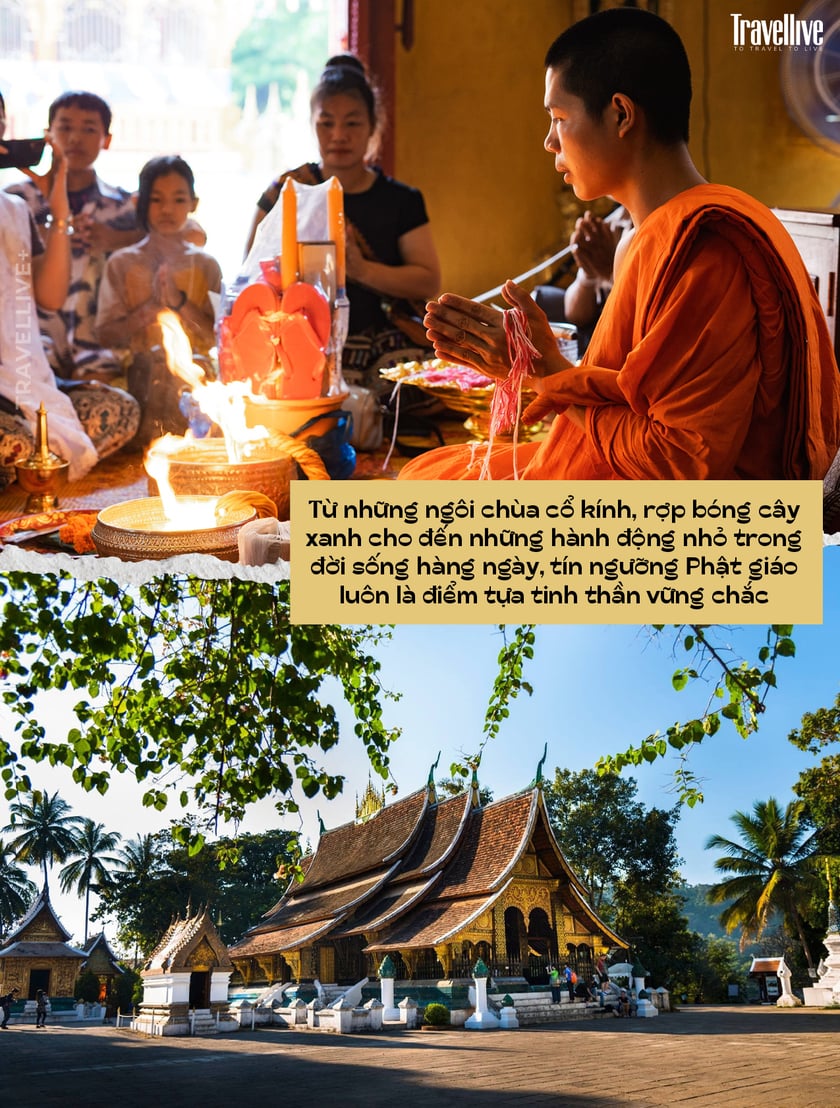
However, when communicating, tourists should pay attention to some typical cultural rules. Lao people are not used to greeting with physical actions such as shaking hands or patting shoulders, instead, they perform the "nop" gesture - clasping both hands in front of the chest and bowing slightly to show respect.
Sharing with Travellive reporter, Khanh said that in Laotian concept, the head is the most noble part of the body, and the foot is the lowest part, so touching another person's head or using the foot to point is considered impolite behavior. Besides, when entering a local's house, remember to take off your shoes to show respect. These small details will help visitors have a more complete experience and get closer to the local people.
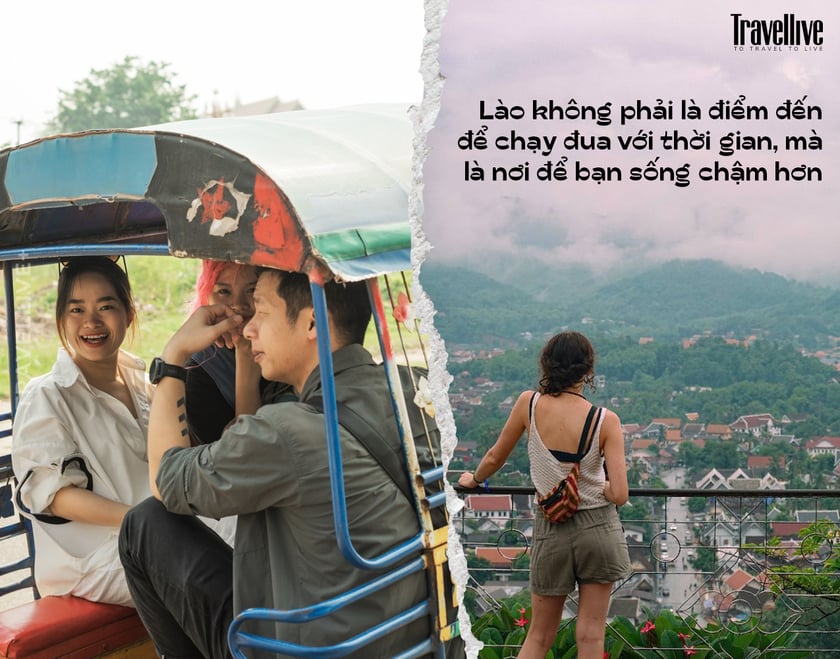

When asked about his most memorable memory during his years in Laos, Khanh did not hesitate to mention Bun Pi May in 2024. He said: “The people I met on that trip are still close friends to this day. We joined the crowd, splashed water, laughed together, and felt the real connection between people.”
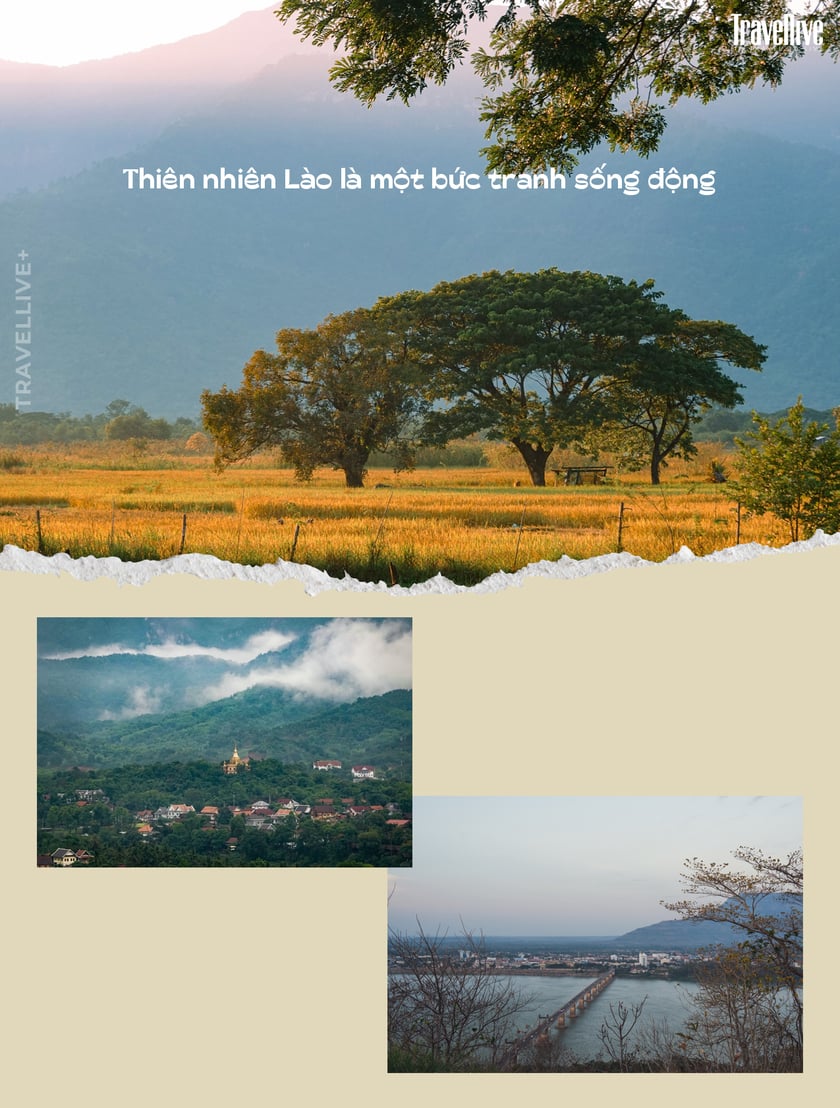
Looking ahead, Khanh will continue to pursue his journey of discovery and lead visitors from afar to his very own Laos. And for those who are planning a trip to this land, let the pace of life in Laos take you away. Don’t rush, don’t schedule too tightly. Because Laos is not in a hurry – and you don’t need to rush either.







